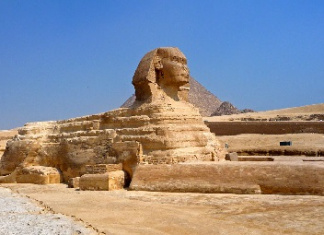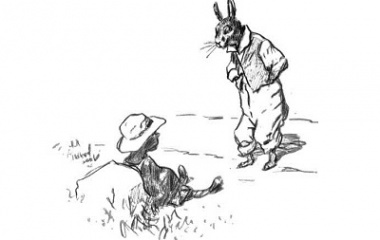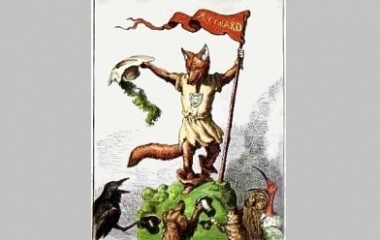For as long as civilization has tried to impose order on its subjects, Tricksters have been thumbing their nose at the rules. These sly characters always find a way to take authority figures down a peg and turn social norms on their head. At the end of the day, they give us more than just a good laugh; they also nudge us towards a re-evaluation of everything we hold true.
What is a Trickster?
A Trickster is a character who uses wits, rather than strength or authority, to accomplish his goals. Like heroes, Tricksters usually come out of their adventures unscathed, having won the prize they desired and upset the regular social order in a way that will cause lasting effects for the people around them. Unlike heroes, Tricksters are usually morally questionable. They may lie, cheat, or steal to get what they want, and their ends don’t justify their means. These slippery characters don’t set out to save the world. They set out to get what they want.
Characteristics
Physical Description
Tricksters come in all forms, shapes, and sizes. They can be men, gods, magical creatures, or animals, as the qualities that unite them come from their personality, not their physical appearance.
Still, there are some norms about the appearance of these social deviants. They are usually male characters, a little bit on the small side but attractive nevertheless. What they lack in brawn, they make up for with their agility and their expressive faces. When animals appear as Tricksters, they are usually small predators like foxes or coyotes.
Special Abilities
Tricksters are, of course, well known for their scheming brains. Outsmarting one of these characters is next to impossible, but brains aren’t the only weapon in their arsenal.
They are masters of disguise. If they have magical abilities, they will probably be fond of shapeshifting from one sneaky form to the next. If they don’t have magic to lean on, they will probably be skilled at creative costume design.
Their wordplay is marvelous. They can find a loophole in the wording of any rule, and they can trick you into signing all your power and fortune away with one seemingly harmless agreement. With their crafty whispers, they can manipulate you by pandering to your ego or preying on your worst fears. They can send coded messages that authority figures mistake for silly songs or children’s poems. And they always, always win riddle contests.
To top it all off, they are dangerously charismatic. Whether they are posing as a funny clown, a fearless hero, a pitiful innocent, or a trusted confidant, Tricksters always find a way to worm their way into the hearts of the people they need. Even when you have suspicions of a Trickster’s true nature, it’s difficult to tune out the pull of their charisma.
Literary Role
If you asked a Trickster what his role was, he would undoubtedly say “to have fun” or “to get what I want.” While it is true that these characters are generally self-serving, their actions often ripple through their community, causing unintended changes.
One of the Trickster’s most important roles is to undermine authority. These clever characters love to break rules and make leaders or social norms look silly. In doing so, they may give more serious social reformers the courage to step forward. After all, if a trickster can flout an oppressive norm or take on a corrupt ruler, why shouldn’t a hero do the same?
Occasionally, Tricksters take the opposite position, creating obstacles between a hero and his noble goal. They might steal an important object, lead the hero astray from his path, or even betray the hero by posing as a friend.
And then, sometimes, the Trickster is just meant to inject a little entertainment or “comic relief” into a story. His jokes and hijinks can de-pressurize a tense situation or lighten the overall mood of a story.
Famous Tricksters
Eastern Culture
In Chinese culture, legends of the Monkey King date back to the ninth century. The crafty King was born with incredible intelligence, which allowed him to master a deck of magical tricks, including shape-shifting into 72 images and somersaulting across the clouds. Eventually, he grew so powerful that he began getting into scuffles with the Jade Emperor, the lord of heaven itself. None of heaven’s warriors could lay a finger on the Monkey King.
In Indonesian and Malaysian culture, a tiny mouse deer, named Kancil, outsmarts larger animals time and time again. Usually, Kancil is backed in a tight spot—fallen into a hunter’s trap or cornered by a tiger—and has to use his bright imagination and his silver tongue to talk his way out of certain death.
Greek Culture
On the outside, Hermes may seem like one of the most harmless Greek gods. He is small, youthful, and has no realm to rule over. Still, there is no end to the mischief which this boyish god brings about. He has notoriously itchy fingers, stealing Apollo’s cattle, Poseidon’s trident, Artemis’ arrow, and Aphrodite’s girdle at various times. His way with words has earned him the position of diplomat and messenger between the gods. When he can’t find a large scheme to involve himself in, he amuses himself with tricky inventions; he is responsible for inventing the game of dice, the bewitching lyre, fire, and the art of lying. Most importantly, Hermes is seen as a herald of change. Whenever he appears, the status quo is about to be shaken up.
Norse Culture
Loki, the god of chaos, is perhaps one of the most famous examples of a Trickster character. This shape-shifting, trouble-making god is constantly on the lookout for a way to undermine authority figures. His allegiance shifts between the gods enthroned on Asgard and their mortal enemies, the ice giants, so frequently that no one ever truly knows which side he belongs to; apparently, he is a side unto himself.
Loki is famous for his dangerous charisma (especially with women) and his wicked sense of humor. Using his smooth way with words, he ingratiates himself with one powerful woman after another, only to set her heart against people he doesn’t like. In one story, an angry giantess threatens to destroy all of Asgard unless the gods can make her laugh. Of course, the gods elect Loki to sooth the giantess’s wrath, which he does successfully.
Not only does Loki run afoul of the social rules of Viking culture, he also defies the rules of nature. In one story, he is impregnated and gives birth to an eight-legged horse. In another story, he travels to the realm of the dead and back, proving that this Trickster character truly recognizes no authority other than himself.
African Culture
In the oral tradition of west Africa, a spider named Anansi is a Trickster elevated to the status of a folk-hero. He is honored for his intelligence and his beautiful command of language, and according to one Ghanaian tale, he is the god of all stories, which he purchased from the sky god by tricking and capturing a python, a leopard, and a hornet and delivering them to the sky god’s home.
As the slave trade funneled people of African descent into foreign lands, where they were oppressed by cruel authority figures, Anansi’s fame spread. He became a powerful symbol of hope to slaves in the Caribbean nations and in the southern United States. They were encouraged by Anansi’s craftiness and his ability to get the better of stronger, loftier characters. The Trickster’s famous word-craft might even have inspired slaves to begin hiding secret messages in songs and folk tales, a brilliant decision that led to the escape of hundreds of slaves.
Native American Culture
The indigenous people of North America favored the coyote as their Trickster character. Coyote is a very powerful figure, even appearing in the creation stories of many Native American tribes, but he never seems to take anything seriously. According to the Maidu tribe in California, Coyote sat with the Creator while the world was made out of clay, and his uncontrollable laughter disfigured the world while it was still soft. In addition to a long list of small-scale hijinks, Coyote is responsible for introducing fire and the first lie to the world.
Southern United States Culture
In the southern United states, Trickster tales from European settlers, enslaved African Americans, and Native Americans gradually melded into a new generation of folk tales. The most famous character to come out of these tales was Br’er Rabbit, a resourceful rabbit with a remarkable talent for lying his way out of a pinch.
Modern Culture
Although Trickster gods and animals are mostly the stuff of history books, Trickster characters are alive and well. They are even considered to be staple characters in Joseph Campbell’s theory of “the hero’s journey,” an acclaimed theory which claims that all works of literature follow the same plot and include the same characters, when examined on a fundamental level.
Some of today’s favorite Tricksters are Tom Sawyer, a crafty southern boy who always manages to find a way out of work and into adventure, the Cheshire cat, a philosophical feline whose sage advice always seems to land people in sticky situations, and Fred and George Weasley, two twins who keep a whole castle full of wizards on their toes.










